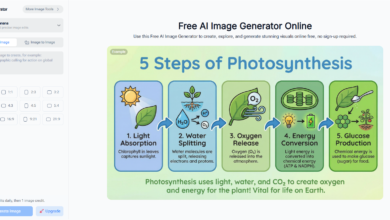What to Look for in an AI-Powered Vehicle Inspection Tool

Manual vehicle inspections across insurance, rentals, resale, and fleet management have plagued businesses for decades with the same persistent problems. These traditional processes are time-consuming, subjective, prone to errors or oversight, and expensive to scale effectively across growing operations.
Choosing the correct and apt AI-powered inspection tool needs a very careful evaluation of technical capabilities, usability features and vendor support, which is provided by companies like Inspektlabs. The wrong choice can lead to wasted investment, operational disruptions, and continued reliance on inefficient manual processes.
1. Damage Detection Accuracy
The core function of any AI inspection tool is identifying vehicle damage with precision and consistency that exceeds human capabilities. The system’s accuracy directly determines its business value and operational effectiveness.
Surface-Level Damage Detection:
The AI should reliably detect scratches, dents, scuffs, and other cosmetic issues that affect vehicle appearance and value. Look for solutions that can identify subtle damage that human inspectors might miss while maintaining low false positive rates that could trigger unnecessary concerns.
Structural Damage Identification:
Beyond surface issues, the system should recognize panel misalignments, broken parts, and structural damage that affects vehicle safety and functionality. This ability is very important and critical for insurance claims and safety assessments that require comprehensive damage inspection.
2. AI’s Ability to Learn and Improve
Machine learning capabilities determine whether the inspection tool becomes more valuable over time or remains static with fixed limitations that may become obsolete.
Training Dataset Quality:
Verify that the AI is trained on large, diverse datasets covering multiple vehicle types, damage conditions, and geographic variations. Comprehensive training data ensures accurate performance across different scenarios and reduces bias toward specific vehicle types or damage patterns.
Continuous Learning:
The system should constantly learn from new inputs in order to improve accuracy and adapt to emerging vehicle designs, damage patterns, and use cases. This ongoing improvement ensures long-term value and reduces the need for system replacement as technology evolves.
Error Reduction:
Ask for evidence that the AI reduces false positives and negatives over time through feedback mechanisms and model refinement. Improving accuracy directly translates to reduced operational overhead and improved customer satisfaction.
3. Ease of Use for End Users
Intuitive Interface:
The system should feature user-friendly interfaces that need only minimal training for customers, drivers, or field agents. Complex interfaces tend to create barriers to adoption and increase support costs while reducing operational efficiency.
Real-Time Feedback:
The system should provide immediate feedback about image quality, completeness, and next steps.
4. Automatic Report Generation
Automated reporting capabilities transform raw inspection data into actionable business intelligence that supports decision-making and documentation requirements.
Comprehensive Documentation:
The tool should automatically compile vehicle condition reports including time-stamped before and after images, annotated damage locations, and severity assessments. This detailed documentation removes manual report creation while also ensuring consistency.
Professional Presentation:
Reports should feature professional formatting and clear visual presentation that builds credibility with customers, insurance companies, and other stakeholders who rely on inspection results.
5. Before vs. After Comparison Functionality
Comparison capabilities are essential for use cases involving claims processing, repair validation, and rental operations that require tracking condition changes over time.
Image Set Comparison:
The system should effectively compare two image sets taken before and after repairs or rental periods, highlighting differences that indicate resolved or new issues.
This ability gives us objective evidence for billing, dispute resolution, and quality verification.
Visual Evidence:
Comparison reports should provide clear visual evidence that supports decision-making and dispute resolution. Side-by-side presentations make differences obvious while annotations explain the significance of changes.
6. Cloud Integration and Data Accessibility
Modern inspection tools must integrate seamlessly with existing business systems while providing secure, accessible data storage and management capabilities.

Cloud Storage:
The solution should provide secure cloud storage for inspection data with appropriate backup and disaster recovery capabilities. Cloud storage makes sure of data accessibility while also decreasing the local storage requirements and management overhead.
Access Control:
The system should support role-based access control and comprehensive data security measures that protect sensitive information while enabling appropriate access for different user types and business functions.
7. Analytics and Fleet Insights
Advanced analytics capabilities transform individual inspections into strategic business intelligence that supports optimization and planning initiatives.
Trend Analysis:
The tool should provide fleet-wide damage trends, repeat damage hotspots, and predictive maintenance flags that enable proactive management and cost reduction. These insights support strategic decision-making about vehicle acquisition, maintenance, and operations.
Performance Monitoring:
Advanced analytics support performance monitoring across different vehicle types, locations, or operational parameters that help with the constant and continuous improvement and optimization.
8. Customizability and Industry Fit
Different industries have specific requirements that demand customizable features and specialized capabilities tailored to particular use cases.
Insurance Applications:
Insurance companies require pre-existing damage detection, fraud prevention capabilities, and integration with claims management systems. The tool should support insurance-specific workflows and compliance requirements.
Rental Operations:
Rental companies need pre and post-rental checks, self-inspection capabilities, and integration with reservation systems. Customer-facing features and dispute prevention capabilities are particularly important for rental applications.
Fleet Management:
Fleet operators require downtime reduction, performance monitoring, and maintenance planning capabilities. Integration with fleet management systems and predictive analytics are essential for effective fleet operations.
9. Compliance, Security, and Audit Trails
Regulatory compliance and data security are very critical considerations, especially for insurance companies and large fleet operators subject to strict regulatory requirements.
Audit Capabilities:
The system should provide traceable audit logs for all inspections, by also supporting compliance requirements and dispute resolution. Comprehensive audit trails help to protect against fraud while enabling regulatory compliance.

10. Vendor Support and Service Level Agreements
Ongoing support and reliable service delivery are very important for successful implementation and long-term success along with AI inspection technology.
Service Level Agreements:
Clear SLAs for uptime, latency, and performance make us understand the reliable service delivery that supports business operations. Well-defined agreements help to protect against the service disruptions while also keeping clear expectations.
Technology Evolution:
The vendor should demonstrate commitment to ongoing innovation and technology advancement that ensures long-term value and competitive advantage for their clients.
Making the Right Choice
Selecting an AI-powered vehicle inspection tool needs a very careful evaluation of technical capabilities, operational requirements, and strategic objectives. The right choice transforms vehicle inspection from a cost center into a competitive advantage that improves efficiency, reduces costs, and enhances customer satisfaction.

